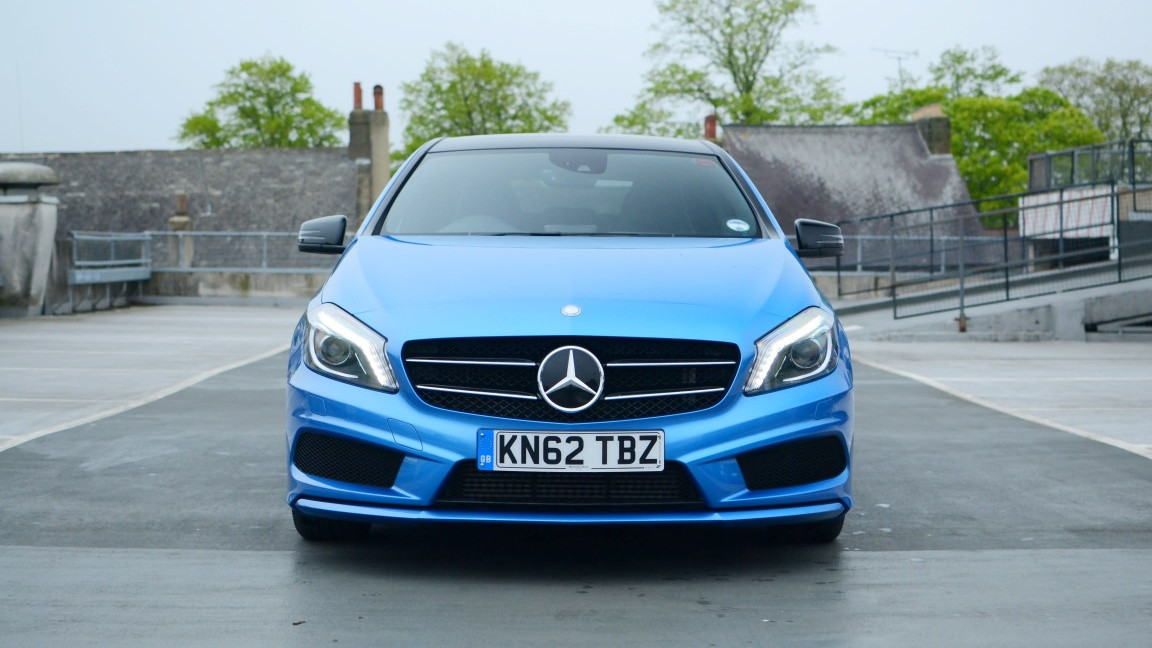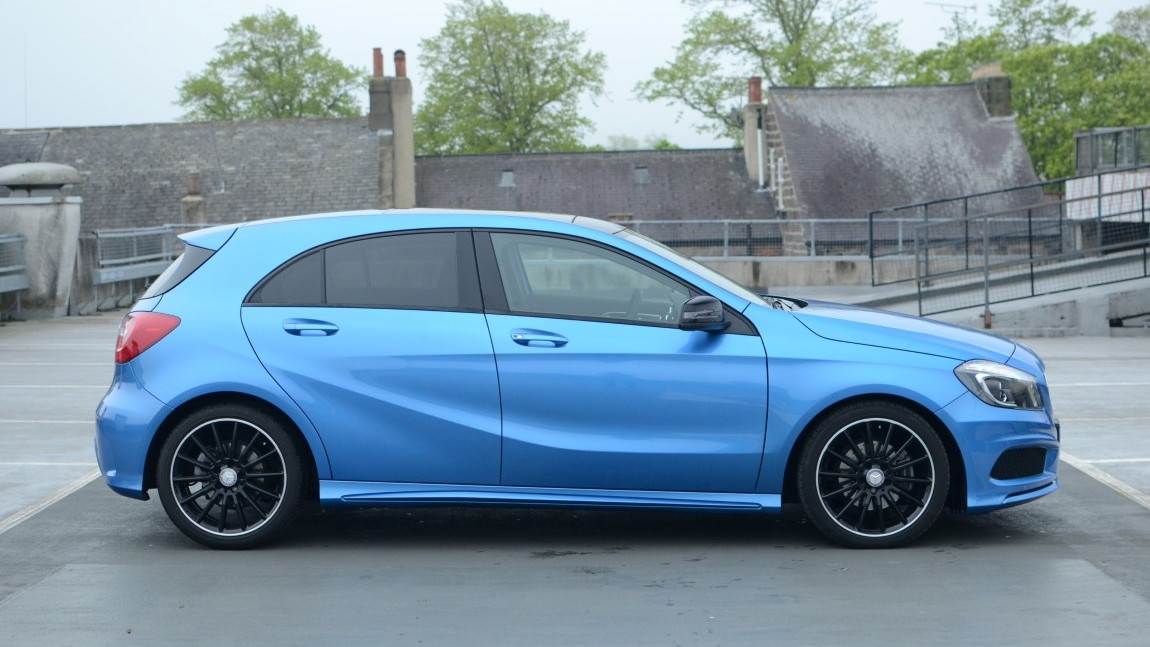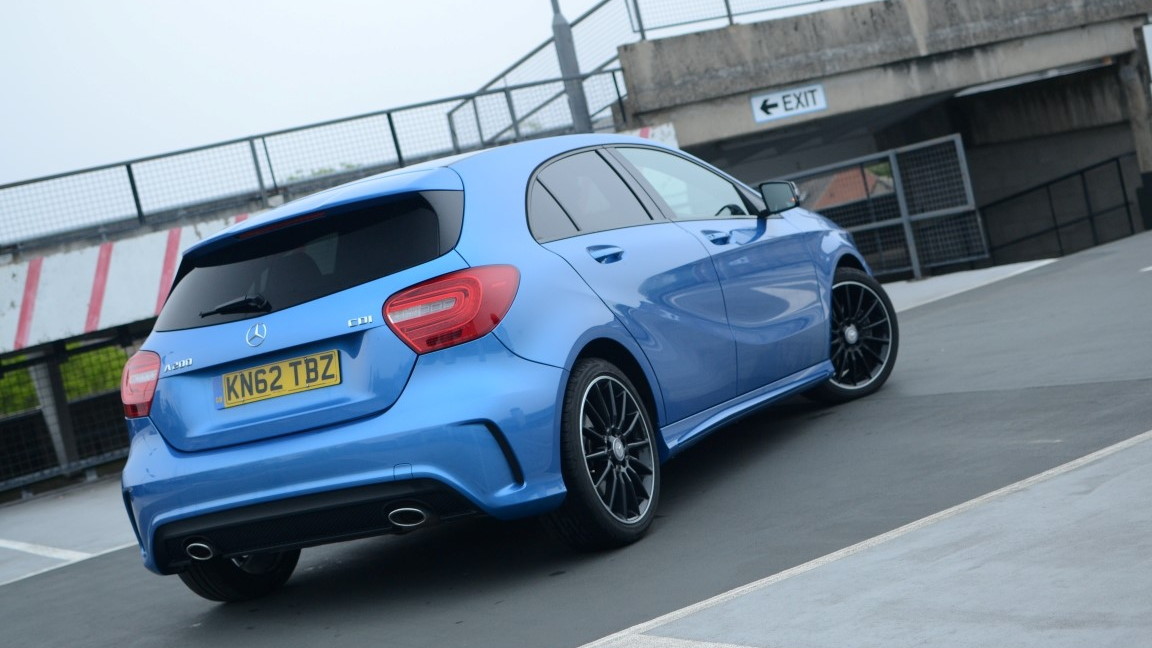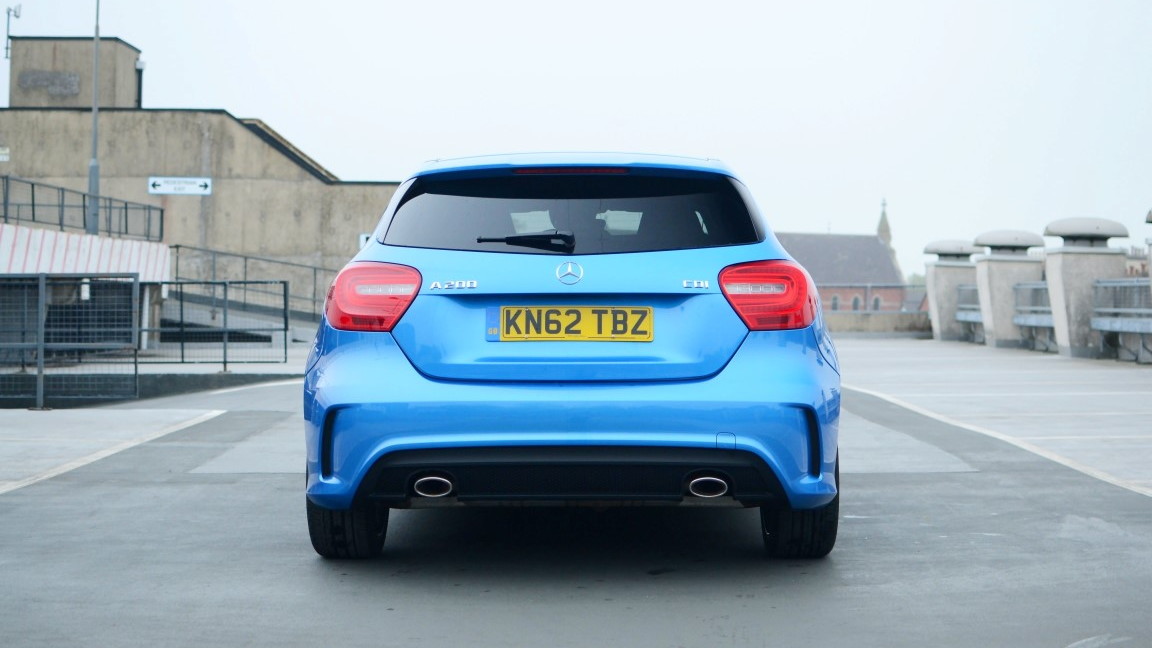For fans of diesel vehicles, there are almost too many to count--few vehicles in Europe don't have a diesel option in the range, but only a handful make it to the U.S.
One which might is the diesel version of the Mercedes-Benz CLA four-door coupe--and we've been driving a close cousin of the model, the Mercedes-Benz A200 CDI.
The smallest 'Benz
When the CLA hits U.S. shores it'll be the smallest Mercedes on sale since the 190e departed in the early 1990s.
The A-Class, a car we've driven before in gasoline form, is even smaller--it shares its front-wheel drive platform with the sleek CLA, but as a hatchback it's shorter in the body.
Much of its styling is the same too, particularly forward of the B-pillar, though without the trunk to balance out the shape it can look a little stunted from some angles--as if it was merely an interim stage in the design before the CLA was completed. It remains aerodynamic though, if not quite in the same league as the 0.23 Cd CLA.
However, its hunkered-down styling, wide track and traditional hatchback shape are a world away from earlier A-Class models, which were tall, narrow and put practicality far above style.
1.8-liter diesel
The A200 CDI you see here differs from the engine likely to arrive in the U.S. While using the same technology, it's smaller in capacity--the U.S. 220 CDI unit will be a 2.1-liter--and it's less powerful as a result.
The 1.8-liter unit develops 136 horsepower and 221 pounds-feet of torque, the latter available from just 1,600 rpm.
Gear-changes are handled by a new 7-speed dual-clutch automatic transmission, and allow for brisk acceleration--0-62 mph takes 9.2 seconds. If you find yourself on a German autobahn, it won't stop accelerating 'till 130 mph.

Mercedes-Benz A Class diesel: UK drive
A little more power wouldn't go amiss, but that's what the 170-hp 220 CDI is for. It could stand to be a little quieter too--while it's virtually inaudible on the highway (road noise from the 225-section tires drowns out wind and engine noise at speed), it grumbles away at idle and can become raucous under hard acceleration too. It's not unpleasant, and U.S. buyers may not notice as much as European drivers more used to the latest diesels, but there's room for improvement.
The gearbox isn't perfect either. Changes are generally quick and easily controlled with steering wheel-mounted paddles when the mood takes you, but in low-speed maneuvers it isn't as smooth as a proper torque converter automatic or CVT.
In Eco mode, where we left it for most of the test, it also changed up early enough to make acceleration a little languid on occasion--buyers seeking more performance may prefer to leave it in Sport. That said, the 220 CDI is again more accelerative than the 200 CDI tested here.

Mercedes-Benz A Class diesel: UK drive
Sporty drive
Performance aside, the A-Class is a little more lively than many U.S. Mercedes buyers will be used to. The sports suspension is quite stiff--verging on irritatingly so on broken UK asphalt--but this does help the car dart through corners with greater aplomb than larger C-Class and E-Class models.
The steering is quick too, but stable at freeway speeds, and the sports leather seats in this car provided adequate support. Long-distance comfort wasn't an issue--a multitude of adjustment meant finding the ideal driving position wasn't difficult.
The cabin materials feel well-assembled and high quality too, but while we like the way the central display screen operates, we still think it cheapens the appearance of the interior. Sadly, this feature is unchanged for the CLA.
Economy
Unfortunately, but not unpredictably, the A200 CDI isn't quite as frugal as the European-market Honda Civic diesel we tested the other week--but then few things are.
Instead, over the course of a week's driving--taking in 70 to 80 mph freeway driving, slow traffic, a little city work and the twists and turns of the Welsh countryside--we achieved an indicated 45 mpg.
That's no more than you might get from a Volkswagen Jetta TDI, but it's a huge improvement over any other Mercedes currently sold in the U.S. Reassuringly, 200 and 220 CDI models sold in Europe achieve identical consumption figures, so similar numbers should be achievable from the more powerful car.
Better still, it means attaining those numbers while enjoying everything else the Mercedes badge brings--the image, the quality, the styling and more.
______________________________________________



















